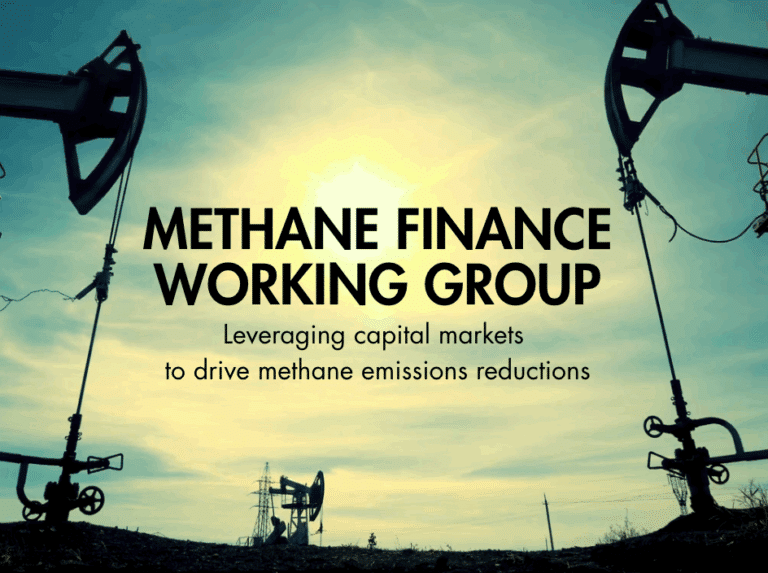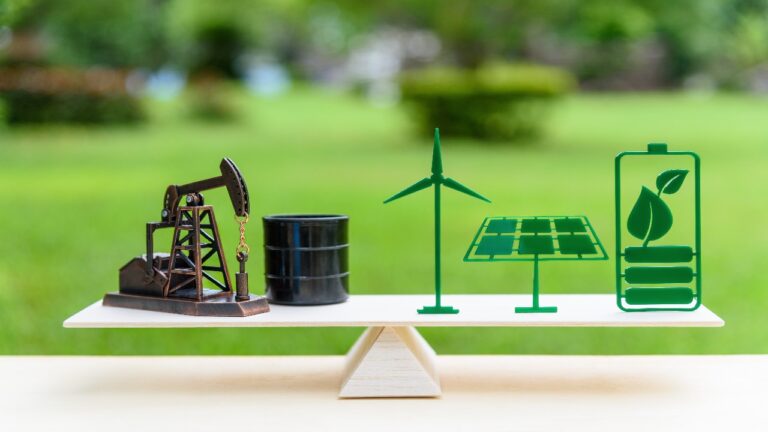EU on track to phase out Russian gas by 2028 but supply challenges remain
- Careful coordination, infrastructure development, and diversified supplies crucial to ensure smooth EU transition - Anadolu Agency
Current Access Level “I” – ID Only: CUID holders, alumni, and approved guests only
Insights from the Center on Global Energy Policy
This Energy Explained post represents the research and views of the author. It does not necessarily represent the views of the Center on Global Energy Policy. The piece may be subject to further revision. Contributions to SIPA for the benefit of CGEP are general use gifts, which gives the Center discretion in how it allocates these funds. Rare cases of sponsored projects are clearly indicated.
For a full list of financial supporters of the Center on Global Energy Policy at Columbia University SIPA, please visit our website at Our Partners. See below a list of members that are currently in CGEP’s Visionary Circle. This list is updated periodically.
When combusting fossil fuels in a world trying to meet the overarching Paris Agreement goal—to hold the increase in global average temperature to “below 2°C and towards 1.5°C” above preindustrial levels—how low do emissions need to go? This fundamental and largely unaddressed question will likely be a point of contention at the 2023 United Nations Climate Change Conference (COP28).
Transitioning to electricity or hydrogen in vehicles, buildings, and industry eliminates direct emissions and greatly reduces overall emissions if the electricity or hydrogen are made cleanly. But firms that keep using fossil fuels for the next generation of longer-lived investments—and especially ones that will continue operating past mid-century—will need to somehow capture and “sequester” the heat-trapping carbon dioxide (CO2) away from the atmosphere, for example by compressing and reinjecting it deep underground. This is called “carbon capture and storage,” or CCS.
A critical open question, however, is what percentage of CO2 they must capture (known as the “capture rate”) both for final use and to process the fuel, and how much fugitive methane can be allowed to leak into the atmosphere from “well to tank” when extracting and processing coal, crude oil, or natural gas. New technologies commonly start at partial performance levels, e.g., a capture rate of 15, 30, or 60 percent CO2. However, cumulative global CO2 and other greenhouse gas (GHG) emissions are such that all new longer-lived investment in energy and industrial facilities operating past 2050 must be as close to zero- or negative-emitting as possible to be compliant with the Paris Agreement, or be offset with permanent, verifiable, and additive negative emissions .
Making this debate harder to work through at the investment-by-investment level, the Paris Agreement goals require all emitters globally to emit no more than 300 to 1,000 gigatons of CO2 collectively (IPCC 2022), or be offset with negative emissions as stated above. How much does a CCS investment in 2025, which might live 5 or 50 years, consume of that very limited budget of emittable CO2?
The answer is critical to understanding how much the world should depend on CCS to reduce CO2 compared to fuel switching to electricity or hydrogen, particularly given the long lifetime of many carbon capture projects. If the capture rates are set too low today (e.g., 60 percent instead of possibly 95 percent) and the allowable fugitives too high (e.g., 2 percent instead of 0.5 percent), the CCS facilities and infrastructure may be pushed out of business before their investment capital is paid off, in the likely scenario of much stronger climate policy evolving during the lifetime of the asset and the facility having to pay full carbon pricing (e.g., of $150 to $200 per metric ton of CO2 or more) on its relatively large residual emissions (Buck et al. 2023).
The stakes are enormous for regions with fossil fuel resources and the producers of those resources. At the global level, a key fossil-fuel-producing country successfully negotiated to have the word “unabated” added before the commitment to phasing out fossil fuels in the final text of the Summary for Policymakers (SPM) of the Intergovernmental Panel on Climate Change’s Sixth Assessment Working Group III report (IPCC 2022). This effectively means CCS is to be allowed and even encouraged—in fact, an entire paragraph was added that expands on the role of CCS—to abate emissions. But while the word “unabated” does a lot of work in the SPM, nowhere does the text define “abated.”
In the US, the definition of sufficient abatement lurks in the background of several discussions. For example, $8 billion has been allocated to hydrogen hubs, which in all likelihood will go mostly to fossil methane-based syngas with CCS facilities, due to its short- to medium-run cost advantage over electrolytic hydrogen (Bataille et al. 2021). These can receive the Inflation Reduction Act’s hydrogen production subsidies based on their level of abatement, starting at a 60 percent reduction from standard production intensities (Fakhry 2022). These facilities will last a long time, and while a significant improvement from today’s emissions levels, they could represent a significant long-term cumulative and residual source of GHG emissions.
Fortunately, many industrial processes already produce almost pure CO2 as waste (autothermal hydrogen production from methane, formation gas cleaners, ethanol production, etc.), and this can simply be collected, compressed, and reinjected underground or reused without release into the atmosphere. CCS for post-combustion CO2 capture and disposal is less well developed, but it will likely be required until new chemistries are commercialized in sectors like cement production, which produce significant amounts of CO2 as an essential chemical by-product (Habert et al. 2020, UN Environment et al. 2018).
Exxon and Nucor have just announced an agreement to work together to retrofit CCS with a 50 percent capture rate (880,000 metric tons per year) to Nucor’s direct reduced iron plant in Convent, Louisiana (Valle 2023). This project is a good test for thinking about sufficient abatement. It will likely sequester most of concentrated CO2, which is basically ready to be compressed and sequestered, but not the heat driving the methane syngas production process. Is this a short-term win for sequestration or a loss given the now locked-in heat emissions?
Without a clear global rule of thumb or norm for what constitutes “abated enough,” many investments, seen as promising installation sites today, could become stranded.
Upstream production and transport fugitive emissions—to say nothing of processing combustion emissions from coal, crude oil, and gas production—are also far too high to meet global climate change goals in all but a few producing regions. While fugitive emissions are less than 0.2 percent of total production for North Sea offshore platforms and 0.2–0.5 percent for some land gas producing regions with tight regulations (such as British Columbia, New Mexico, and Colorado), they can be 7–10 percent in the Permian and other “leaky” regions (IEA 2022). The International Energy Agency (IEA) has called for a minimum of 75 percent reduction in fugitive methane emissions by 2030 (IEA 2021), and the IPCC AR6 WGIII report (C.4.5 of the SPM) noted that 50–80 percent of current fugitives could be reduced at less than $50 per metric ton of carbon dioxide equivalent (CO2e) through basic actions like leak detection and repairs, electrification of compressors and valves, and elimination of nonessential flaring (for example, if all produced methane is piped to market) (IPCC 2022).

Promoting the 2023 UN Climate Change Conference in the UAE. Photograph via Wikimedia Commons.
Projects that lead to long-term (more than 20 to 30 years) lock-in of more than 5–10 percent unabated emissions for anything more than pilot projects will likely require careful evaluation, both on environmental grounds and for exposure to future costly regulation. Policy makers and firms may also wish to consider if it is possible to go further than the IEA’s call for 75 percent reduction in fugitives and push toward 90 percent by 2030–35 (IEA 2021, 2022).
How facilities will be retrofit and how CO2 will be disposed of are critical issues facing industries that are likely to need CCS, like cement. Industrial companies could consider adopting processes that produce concentrated, instead of diluted, CO2 because it will be far cheaper to retrofit CCS with high capture rates (IPCC Bashmakov et al. 2022). For example, hydrogen producers using fossil methane-based production may want to consider auto thermal reforming instead of steam methane reforming (Bataille et al. 2021, UKCCC 2019). While slightly less efficient, it produces a much more concentrated CO2 waste stream, which provides for much cheaper high-capture-rate CO2 isolation, transport, utilization, and reuse. This will be critical for steel, fertilizer, and other chemical plants planning to use fossil-based methane as a chemical feedstock. It may also be possible to design and build facilities adaptably to take advantage of cost declines through time.[1]
In summary, the small remaining carbon budget and the typical long lifetime of carbon capture projects indicate that the global community might wish to discuss whether to consider emissions “abated” with at least 90–95 percent capture and less than 0.5 percent upstream fugitive emissions. This could form the jumping-off point from which an evolving global standard operating practice for clean fossil fuels, hydrogen, and electricity can be developed, with COP28 as the ideal forum for starting this process and making it part of the international dialogue. The author will explore these evolving, likely interrelated global norms in future articles.
CGEP’s Visionary Circle
Corporate Partnerships
Occidental Petroleum Corporation
Tellurian Inc
Foundations and Individual Donors
Anonymous
Anonymous
the bedari collective
Jay Bernstein
Breakthrough Energy LLC
Children’s Investment Fund Foundation (CIFF)
Arjun Murti
Ray Rothrock
Kimberly and Scott Sheffield
Bataille, C. (2020). “Physical and Policy Pathways to Net-Zero Emissions Industry.” WIRES Wiley Interdisciplinary Reviews: Climate Change, 11(e633), 1–20. https://doi.org/10.1002/wcc.633
Bataille, C., Neff, J., & Shaeffer, B. (2021). “The Role of Hydrogen in Canada’s Transition to Net-Zero Emissions.” The School of Public Policy Publication: SPP Research Paper. https://papers.ssrn.com/sol3/papers.cfm?abstract_id=4045769
Buck, H. J., Carton, W., Lund, J. F., & Markusson, N. (2023). “Why Residual Emissions Matter Right Now.” Nature Climate Change, 13(4), Article 4. https://doi.org/10.1038/s41558-022-01592-2
Fakhry, R. (2022). “IRA Hydrogen Incentives: Climate Hit or Miss? TBD.” National Resources Defense Council. https://www.nrdc.org/experts/rachel-fakhry/ira-hydrogen-incentives-climate-hit-or-miss-tbd
Habert, G., et al. (2020). “Environmental Impacts and Decarbonization Strategies in the Cement and Concrete Industries.” Nature Reviews Earth & Environment. https://doi.org/10.1038/s43017-020-0093-3
IEA. (2021). Driving Down Methane Leaks from the Oil and Gas Industry. https://doi.org/10.1787/003a5a4c-en
IEA. (2022). Global Methane Tracker 2022. https://www.iea.org/reports/global-methane-tracker-2022
IPCC. (2022). Climate Change 2022: Mitigation of Climate Change—Summary for Policymakers. Cambridge University Press. https://www.ipcc.ch/report/ar6/wg3/
IPCC, Bashmakov, I. et al. (2022). Chapter 11: Industry. IPCC AR6 WGIII Mitigation. IPCC. https://www.ipcc.ch/report/ar6/wg3/
UKCCC. (2019). Net Zero Technical Report. https://www.theccc.org.uk/publication/net-zero-technical-report/
UN Environment, Scrivener, K. L., John, V. M., & Gartner, E. M. (2018). “Eco-Efficient Cements: Potential Economically Viable Solutions for a Low-CO2 Cement-Based Materials Industry.” Cement and Concrete Research, December. https://doi.org/10.1016/j.cemconres.2018.03.015
Valle, S. (2023). “Exxon Signs Decarbonization Contract with Steel Maker Nucor.” Reuters. June 1, 2023. https://www.reuters.com/business/energy/exxon-signs-decarbonization-contract-with-steel-maker-nucor-2023-06-01/
[1] For example, steelmakers can choose unabated methane syngas-based direct reduction over blast furnaces, cutting emissions in half compared to blast furnaces. They can also leave space for CO2 capture (-60 to -90 percent) mitigation in the design, as well as room for external direct reduced iron (DRI) shaft heating to allow 100 percent hydrogen iron ore reduction (up to 100 percent mitigation).
The Trump administration is increasingly using equity investments as a tool of industrial policy to support domestic critical minerals supply chains.

CGEP scholars reflect on some of the standout issues of the day during this year's Climate Week

President Trump has ended the federal government’s use of the "social cost of carbon" (SCC), an official estimate of the harms caused by carbon dioxide emissions.

In July, Republicans in Congress passed their signature domestic policy package, the One Big Beautiful Bill Act (or, H.R. 1).

Human-caused methane emissions have contributed to at least one quarter of global warming since the preindustrial era. Since methane is 80 times more potent than carbon dioxide (CO2) in trapping heat over the first two decades after its release, abating methane is considered a critical near-term strategy for reducing emissions.[

PetroStates and ElectroStates clash as fossil fuels and clean energy reshape global power, strategy, and alliances.

The report presents insights on Oklahoma’s economic resilience strategies, relevant policies, and proposed program enhancements based on a set of interviews with key stakeholders.